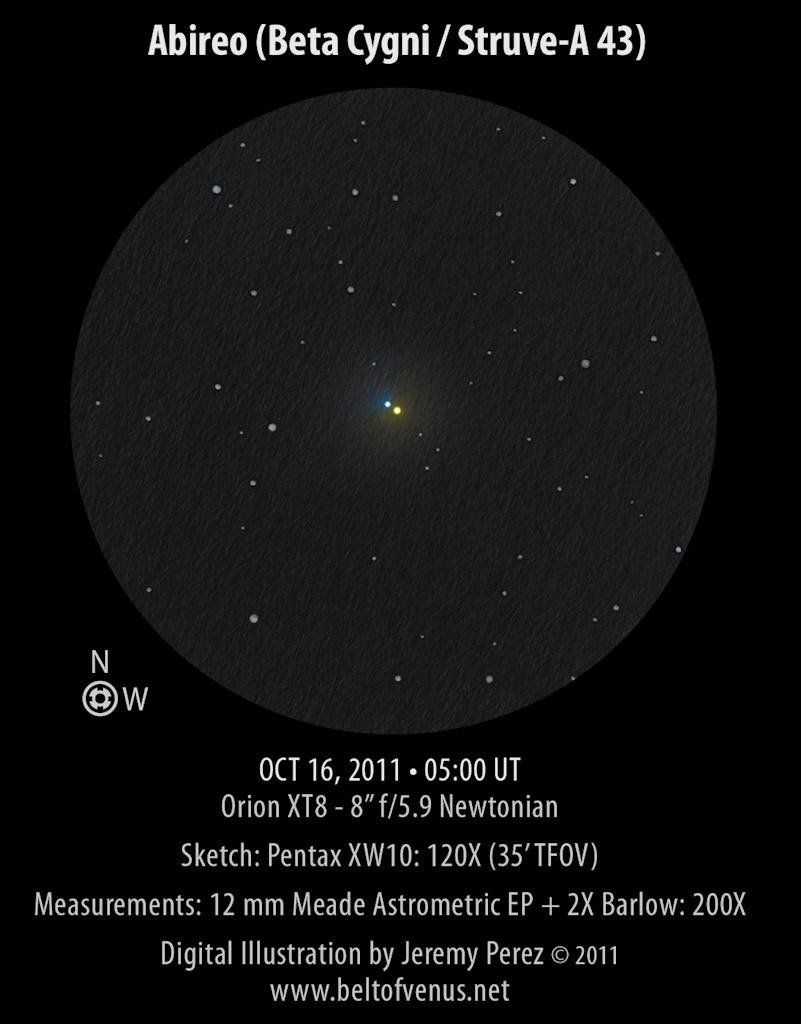DSO of the Month
Beta Cygni
AKA: Albireo; STFA 43. Position: 19 hr 30.7 min 27 degrees 57 min 35 sec
Due south at 22:53 (BST) on 15 August 2020.
Image credit: Jeremy Perez (http://www.perezmedia.net/beltofvenus)
Used with permission
Last month, in July 2020, the double star of the month was 61 Cygni, a famous brightly coloured double in Cygnus. This month, we are looking at an even more famous coloured double in Cygnus, namely Beta Cygni or, as it is invariably called, Albireo. Now I suspect many of you will have already observed Albireo as it is one of the first double stars that new astronomers observe, with the possible exception of Mizar. It is easy to see why. It is bright, the primary is 3.2 and the secondary is 4.7, it is wide, namely 34.7 arcsec, and the colours are the canonical pairing of yellow and blue. But it is not merely yellow and blue, it is bright golden, almost fluorescent, yellow and deep cobalt blue. It is easy to locate, being at the lower eastern end of the “Northern Cross” of Cygnus and beneath the bright star Vega, and you can observe it in the summer without getting frostbite. What could be better? I might add in passing that although it has a Bayer designation of Beta, it is actually the dimmest star in the Northern Cross, but can still usually be made out with the naked eye in Havering. It is also almost at the centre of the Summer Triangle. It was the Astronomer Royal James Bradley who discovered that Albireo was a double star in 1755, two years after he observed 61 Cygni as a double star. William Herschel observed it in December 1779 and called the main star red (some people see it as a reddish orange), but the secondary was a “beautiful blue”. Albireo is a good example of colour contrast. The main star is K2 and the B-V is 1.13; this is clearly yellow, possibly yellow-orange. The secondary is B8 and the B-V is -0.1. Seen on its own, we would probably describe it as silvery-white or at most silvery-blue. It is practically identical to Rigel, except in brightness, as Rigel is also B8 with a B-V of -0.03. But seen next to a very yellow star, the eye sees it as deep blue. It has been long debated whether Albireo is a binary system or not. Gaia has more or less settled the question, the two stars are close, but not very close (the main star is 430 ± 20 light years away and the secondary is 400 ± 10 light years) but they are moving in different directions.
